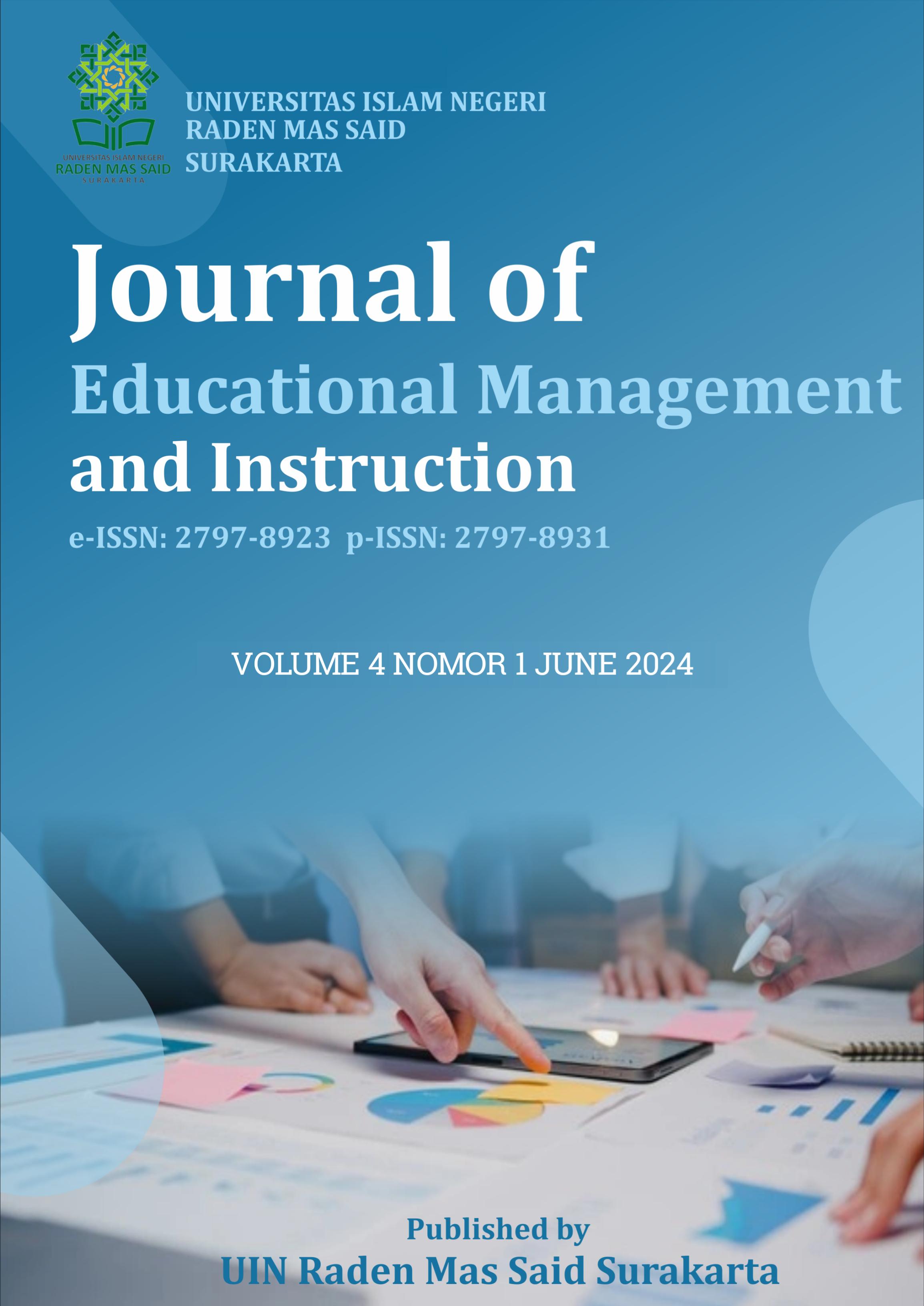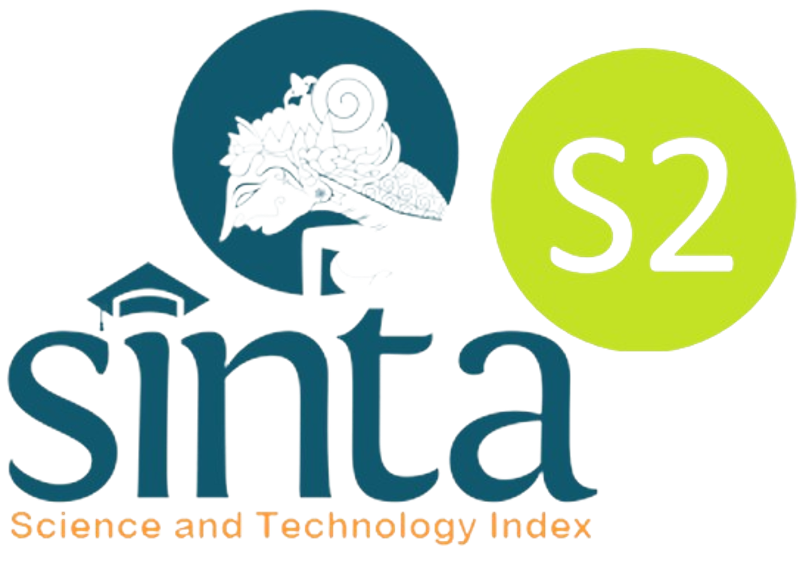Developing Flipbook Benadaku with YouTube videos to improve students' learning outcomes in natural and social sciences
DOI:
https://doi.org/10.22515/jemin.v4i1.9482Keywords:
Flipbook Benadaku, Learning Media, Learning Outcomes, Natural Science, Social ScienceAbstract
This research was motivated by the low learning outcomes of students in natural and social sciences subjects on the material of norms in regional customs. Consequently, this study aims to develop and determine the effectiveness and feasibility of the Flipbook Benadaku media with YouTube videos to improve the learning outcomes of fourth-grade students in these subjects. Research and Development (R&D) is the type of research conducted, utilizing the research model design from Dick and Carey. The research subjects consisted of 27 fourth-grade students. To collect data, both test and non-test techniques were employed. Specifically, the test technique involved pre-tests and post-tests, while non-test techniques included observation and interviews. As a result, the development of the Flipbook Benadaku with YouTube videos was achieved. The feasibility results of the Flipbook Benadaku with YouTube videos indicate that the media is suitable for use, as evidenced by the assessments of material experts and media experts, with percentages of 92% and 90.4% respectively. Furthermore, the learning outcomes of the fourth-grade students improved significantly, with an average pretest score of 45.83 and a post-test score of 86.67, resulting in an N-gain of 0.77, which is categorized as high. Thus, the media is considered quite effective. In conclusion, Flipbook Benadaku with YouTube videos is validated as effective for use in natural and social sciences learning and can significantly enhance students' learning outcomes on the material of norms in regional customs.
Downloads
References
Ahmadi, F., Hardyanto, W., Pramono, S. E., Sugiarta, I. M., Syahputra, H., Kristanto, A., Parinsi, M. T., & Sugihartono, I. (2023). Developing mobile learning application containing basic pedagogy material as a supplement in improving college students’ learning outcomes in teacher training institutes of Indonesia. European Journal of Educational Research, 12(1), 213–227. https://doi.org/10.12973/eu-jer.12.1.213
Anisa, M., Putri, R. N., Regina, Y., & Nugraha, D. (2022). Pengembangan media TikTok pada mata pelajaran ips perubahan sosial budaya sebagai modernisasi bangsa di sekolah dasar. Jurnal Basicedu, 6(4), 6998–7006. https://doi.org/10.31004/basicedu.v6i4.2982
Arifin, A. syamsul, & Lestari, E. S. (2020). Genetics bacterial teaching materials development based on flipbook in microbiology subject to improve learning motivation. Jurnal Pendidikan Biologi, 5(2), 202–211. https://doi.org/10.31932/jpbio.v5i2.862
Batubara, H. H. (2020). Media pembelajaran efektif. Fatawa Publishing. https://www.academia.edu/44607265/Media_Pembelajaran_Efektif
Batubara, H. H., Noor, H., Siregar, P., Ihwanah, A., Husni, M., Wibowo, D. R., Magfurin, A. & Ariani, D. N. (2023). Developing a mobile-assisted project-based learning model for a learning media course. International Journal of Interactive Mobile Technologies, 17(17), 4–18. https://doi.org/10.3991/ijim.v17i17.41705
Batubara, H. H., Sumantri, M. S., & Marini, A. (2022). Developing an android-based e-textbook to improve learning media course outcomes. International Journal of Interactive Mobile Technologies, 16(17), 4–19. https://doi.org/10.3991/ijim.v16i17.33137
Bulkani, B., Fatchurahman, M., Adella, H., & Setiawan, M. A. (2022). Development of animation learning media based on local wisdom to improve student learning outcomes in elementary schools. International Journal of Instruction, 15(1), 55–72. https://doi.org/10.29333/iji.2022.1514a
Dewi, N. S. N., Supriyono, Y., & Saputra, Y. (2020). Pengembangan media pembelajaran bahasa berbasis Gamifikasi untuk guru-guru di lingkungan pondok pesantren Al Amin Sindangkasih-Ciamis. E-Dimas: Jurnal Pengabdian Kepada Masyarakat, 11(3), 382–387. https://doi.org/10.26877/e-dimas.v11i3.5146
Dick, W., Carey, L., & Carey, J. O. (2015). The systematic design of instruction (Eighth edition). Pearson. https://doi.org/10.1007/s11423-006-9606-0
Hasan, M. (2021). Media pembelajaran. Tahta Media Group. https://tahtamedia.co.id/index.php/issj/article/view/24
Hidaya, Z. Y. P., Laily, I. F., & Ummah, I. (2022). Pengaruh media pembelajaran buku cerita bergambar terhadap minat baca siswa kelas III Madrasah Ibtidaiyah. Journal of Integrated Elementary Education, 2(2), 144–156. https://doi.org/10.21580/jieed.v2i2.13058
Karsiwan, R. L., Lisdiana, A., & Hamer, W. (2023). Penguatan pendidikan karakter melalui pembelajaran IPS berbasis kearifan lokal di Lampung. Jurnal social pedagogy (Journal of Social Science Education), 4(1), 39–52. https://doi.org/10.32332/social-pedagogy.v4i1.6612
Khotimah, H., Yulita, P., Ayu, S., & Syafaruddin, M. (2023). Pengaruh media pembelajaran filpbook terhadap hasil belajar siswa pada mata pelajaran IPAS di SMK Negeri 2 Pangkep. Guru Pencerah Semesta, 1(2), 180–187. https://doi.org/10.56983/gps.v1i2.864
Manzil, E. F., Sukamti, S., & Thohir, M. A. (2022). Pengembangan e-modul interaktif heyzine flipbook berbasis scientific materi siklus air bagi siswa kelas V sekolah dasar. Sekolah Dasar: Kajian Teori Dan Praktik Pendidikan, 31(2), 112. https://doi.org/10.17977/um009v31i22022p112
Melindawati, S., Apfani, S., & Suryani, A. I. (2021). Pengaruh penggunaan model pembelajaran problem based learning berbantuan media audio visual terhadap keterampilan berpikir kritis mahasiswa pada pembelajaran konsep dasar IPS di PGSD STKIP Adzkia. Jurnal Inovasi Pendidikan dan Pembelajaran Sekolah Dasar, 5(2), 125. https://doi.org/10.24036/jippsd.v5i2.114255
Monitha, N., Andriana, E., Alamsyah, T. P., & Hendracipta, N. (2022). Pengembangan bahan ajar berbasis e-book pada mata pelajaran ipa materi penggolongan hewan berdasarkan jenis makanannya di SD Negeri Serang 20. Primary: Jurnal Pendidikan Guru Sekolah Dasar, 11(2), 479. https://doi.org/10.33578/jpfkip.v11i2.8551
Noviyanti, H., Hakim, Y. Al, Kurniawan, E. S., & Akhdinirwanto, R. W. (2022). The implementation of virtual home laboratories to improve students’ psychomotor abilities. Jurnal Pijar MIPA, 17(6), 759–763. https://doi.org/10.29303/jpm.v17i6.4210
Nugraha, S., Megawati, E., & Ikhwati, A. (2023). Pengembangan e-modul materi teks eksposisi berbasis flipbook heyzine untuk siswa kelas X SMA Fajrul Islam. Hortatori: Jurnal Pendidikan Bahasa dan Sastra Indonesia, 7(2), 115–123. https://doi.org/10.30998/jh.v7i2.2440
Nurlita, A. T., Asnawi, & Fransyaigu, R. (2024). Pengembangan media pembelajaran interaktif berbasis adobe flash untuk siswa sekolah dasar. Journal of Basic Education Studies, 7(2), 1–10. https://ejurnalunsam.id/index.php/jbes/article/view/9958
Rahma, H., & Asih, S. S. (2024). Development of monopoly learning media based on joyful learning model on natural sciences and social material. Research and Development in Education, 4(1), 237–251. https://doi.org/10.22219/raden.v4i1.32594
Rahmawati, Y., Firmansyah, M. A., Galuh, I. P., & Nurbaiti, H. (2019). Pengembangan bahan ajar berbasis e-book matematika melalui soal cerita bernuansa islami dalam meningkatkan pemahaman konsep tingkat SD. Jurnal Muara Pendidikan, 4(2), 379–387. https://doi.org/10.52060/mp.v4i2.168
Saraswati, R. R., Makmuri, & Salsabila, E. (2021). Pengembangan LKPD digital berbasis HOTS pada materi dimensi tiga. Risenologi, 6(2), 17–25. https://doi.org/10.47028/j.risenologi.2021.62.183
Sari, W. N., & Ahmad, M. (2021). Pengembangan media pembelajaran flipbook digital di sekolah dasar. Edukatif : Jurnal Ilmu Pendidikan, 3(5), 2819–2826. https://doi.org/10.31004/edukatif.v3i5.1012
Setiadi, M. I., Muksar, M., & Suprianti, D. (2021). Penggunaan media pembelajaran flipbook untuk meningkatkan aktivitas dan hasil belajar siswa. JISIP (Jurnal Ilmu Sosial Dan Pendidikan), 5(4), 1066-1075. https://doi.org/10.58258/jisip.v5i4.2542
Sholeh, M. (2019). Pengembangan media Pop-Up Book berbasis budaya lokal keberagaman budaya bangsaku siswa kelas IV sekolah dasar. Jurnal Gentala Pendidikan Dasar, 4(1), 138–150. https://doi.org/10.22437/gentala.v4i1.6979
Sugiyono. (2017). Metode Penelitian Pendidikan: Pendekatan Kuantitatif, Kualitatif, dan R&D (Cetakan Ke-25). Alfabeta. https://elibrary.bsi.ac.id/readbook/206060/metode-penelitian-kuantitatif-kualitatif-dan-r-d.html
Susanti, E. D., & Sholihah, U. (2021). Pengembangan e-modul berbasis flip pdf corporate pada materi luas dan volume bola. Range: Jurnal Pendidikan Matematika, 3(1), 37–46. https://doi.org/10.32938/jpm.v3i1.1275
Usman, A., Dewi, N. K., & Indraswati, D. (2023). Bahan ajar elektronik flipbook pada materi kegiatan ekonomi untuk siswa kelas IV sekolah dasar. Jurnal Educatio FKIP UNMA, 9(3), 1293–1301. https://doi.org/10.31949/educatio.v9i3.5300
Wahyuningtyas, R., & Sulasmono, B. S. (2020). Pentingnya media dalam pembelajaran guna meningkatkan hasil belajar di sekolah dasar. Edukatif : jurnal ilmu pendidikan, 2(1), 23–27. https://doi.org/10.31004/edukatif.v2i1.77
Wiratmaja, C. G. A. (2019). Penerapan model pembelajaran kooperatif tipe jigsaw untuk meningkatkan hasil belajar fisika siswa. Jurnal Santiaji Pendidikan, 9(2), 127–133. https://doi.org/10.36733/jsp.v9i2.393
Yolanda, A., Santa, & Indriani, R. S. (2023). Pengembangan media pembelajaran interaktif menggunakan genially pada materi norma dalam adat istiadat daerahku. Pendas: Jurnal Ilmiah Pendidikan Dasar, 08(01), 6244–6251. https://doi.org/10.23969/jp.v8i1.9137
Yuniarti, S., & Darmanto, E. (2022). Pengembangan bahan ajar elektronik (bae) berbasis flip pdf professional untuk meningkatkan hasil belajar peserta didik kelas IV SD muatan pelajaran IPS di gugus Sultan Fatah kecamatan Demak kabupaten Demak. Jurnal Prakarsa Paedagogia, 5(2), 451-463. https://doi.org/10.24176/jpp.v5i2.8785
Downloads
Submitted
Accepted
Published
How to Cite
Issue
Section
License
Copyright (c) 2024 Nila Rohmatul Jannah, Farid Ahmadi

This work is licensed under a Creative Commons Attribution-NonCommercial 4.0 International License.
Copyright
Copyright aims to protect the specific way the article has been written to describe an experiment and the results. Journal of Educational Management and Instruction is committed to its authors to protect and defend their work and their reputation and takes allegations of infringement, plagiarism, ethical disputes, and fraud very seriously. Automotive Experiences is published under the terms of the Attribution-NonCommercial 4.0 International (CC BY-NC 4.0). Authors retain copyright and grant the journal right of first publication (online and print) with the work simultaneously. We use the restrictive license (non-commercial) as follows:
BY (attribution): Users are allowed to share, distribute and redistribute the published article in any medium or format, with an identification of the authors and its initial publication in this journal. Authors are encouraged to post and distribute their articles immediately after publication (e.g., institutional or public repositories, personal websites). Authors are allowed to enter into additional contractual arrangements for the non-exclusive distribution of the published and an acknowledgment of its initial publication in this journal.
NC (non-commercial): Users are not allowed to use the article commercially without the permission of the authors. Authors agree explicitly that the published article is indexed worldwide in databases, repositories and indexation services, even if these services operate on a commercial basis. Authors grant Journal of Educational Management and Instruction explicit the right to include the published articles in databases, repositories and indexation services.
License
License to Publish
The non-commercial use of the article will be governed by the Attribution-NonCommercial 4.0 International (CC BY-NC 4.0). The author hereby grants Journal of Educational Management and Instruction an exclusive publishing and distribution license in the manuscript include tables, illustrations or other material submitted for publication as part of the manuscript (the “Articleâ€) in print, electronic and all other media (whether now known or later developed), in any form, in all languages, throughout the world, for the full term of copyright, and the right to license others to do the same, effective when the article is accepted for publication. This license includes the right to enforce the rights granted hereunder against third parties.
Author's Warranties
The author warrants that the article is original, written by stated author/s, has not been published before, contains no unlawful statements, does not infringe the rights of others, is subject to copyright that is vested exclusively in the author and free of any third party rights, and that any necessary written permissions to quote from other sources have been obtained by the author(s).
User Rights
Under the Creative Commons Attribution-Non Commercial 4.0 International (CC BY-NC 4.0) license, the author(s) and users are free to share (copy and redistribute the material in any medium or format) and adapt (remix, transform, and build upon the material). Users must give appropriate credit, provide a link to the license, and indicate if changes were made.
Rights of Authors
Authors retain the following rights:
- Copyright, and other proprietary rights relating to the article, such as patent rights,
- The right to use the substance of the article in future own works, including lectures and books,
- The right to reproduce the article for own purposes, provided the copies are not offered for sale, and
- The right to self-archive the article.
Co-authorship
If the article was prepared jointly with other authors, the signatory of this form warrants that he/she has been authorized by all co-authors to sign this agreement on their behalf, and agrees to inform his/her co-authors of the terms of this agreement.

























